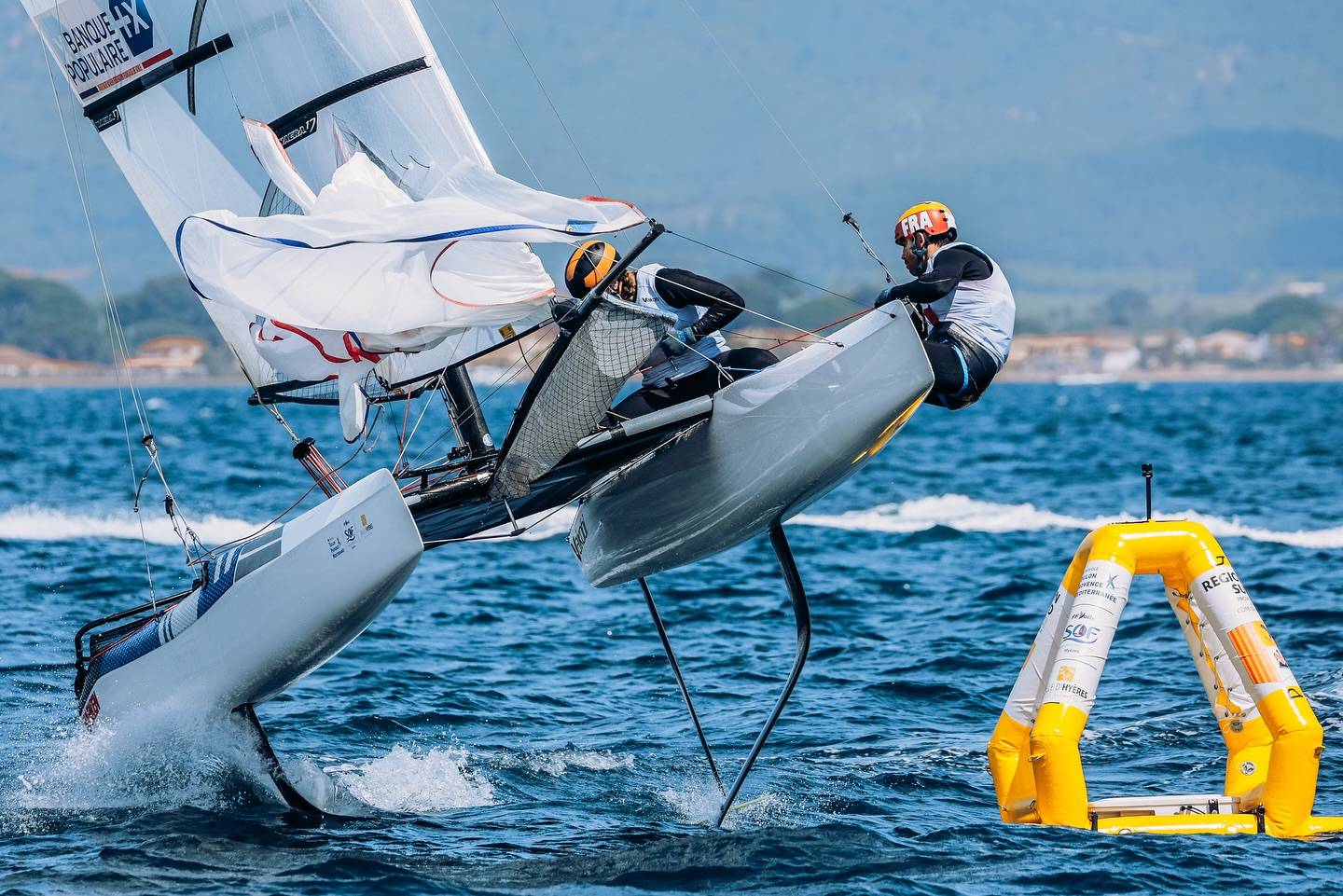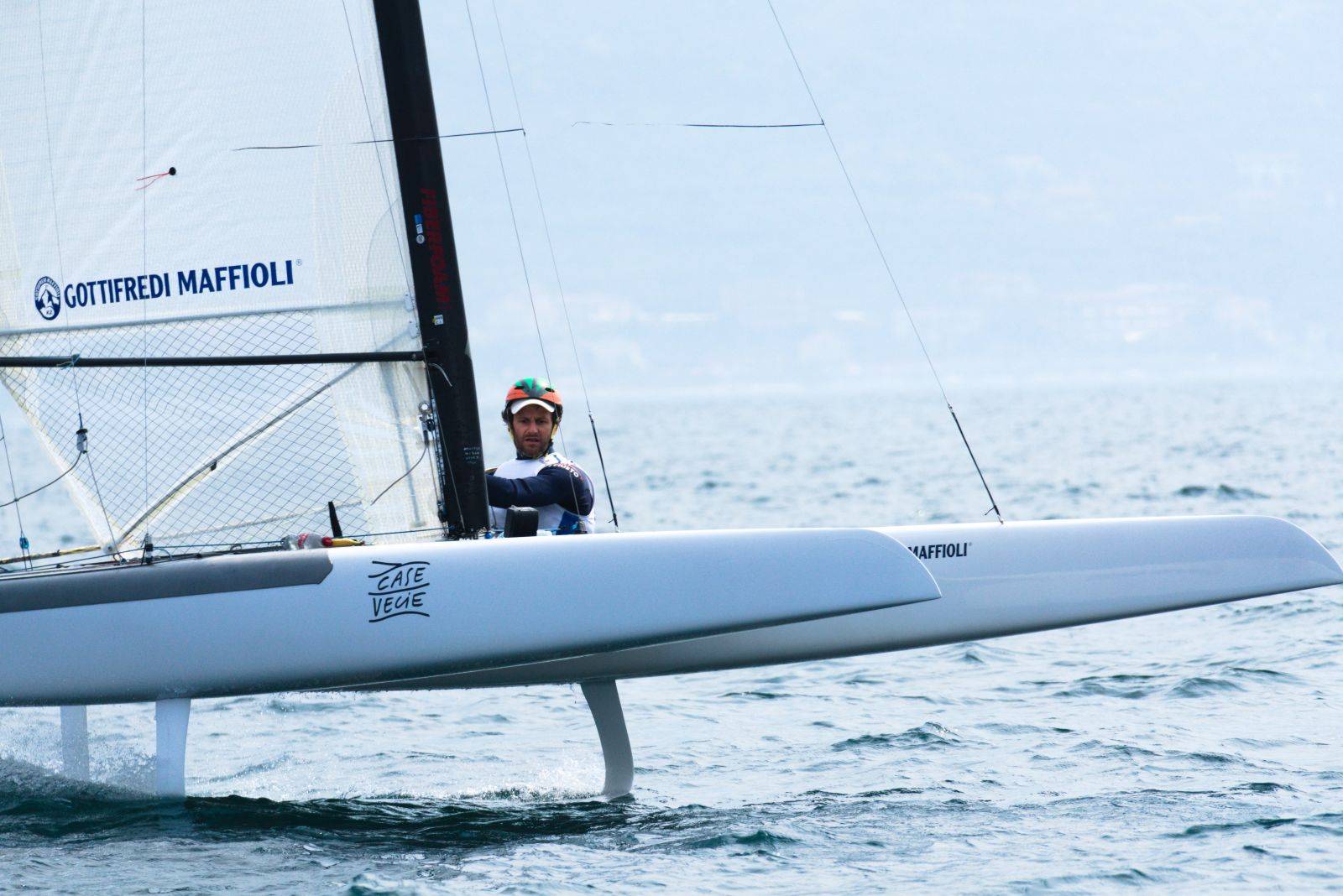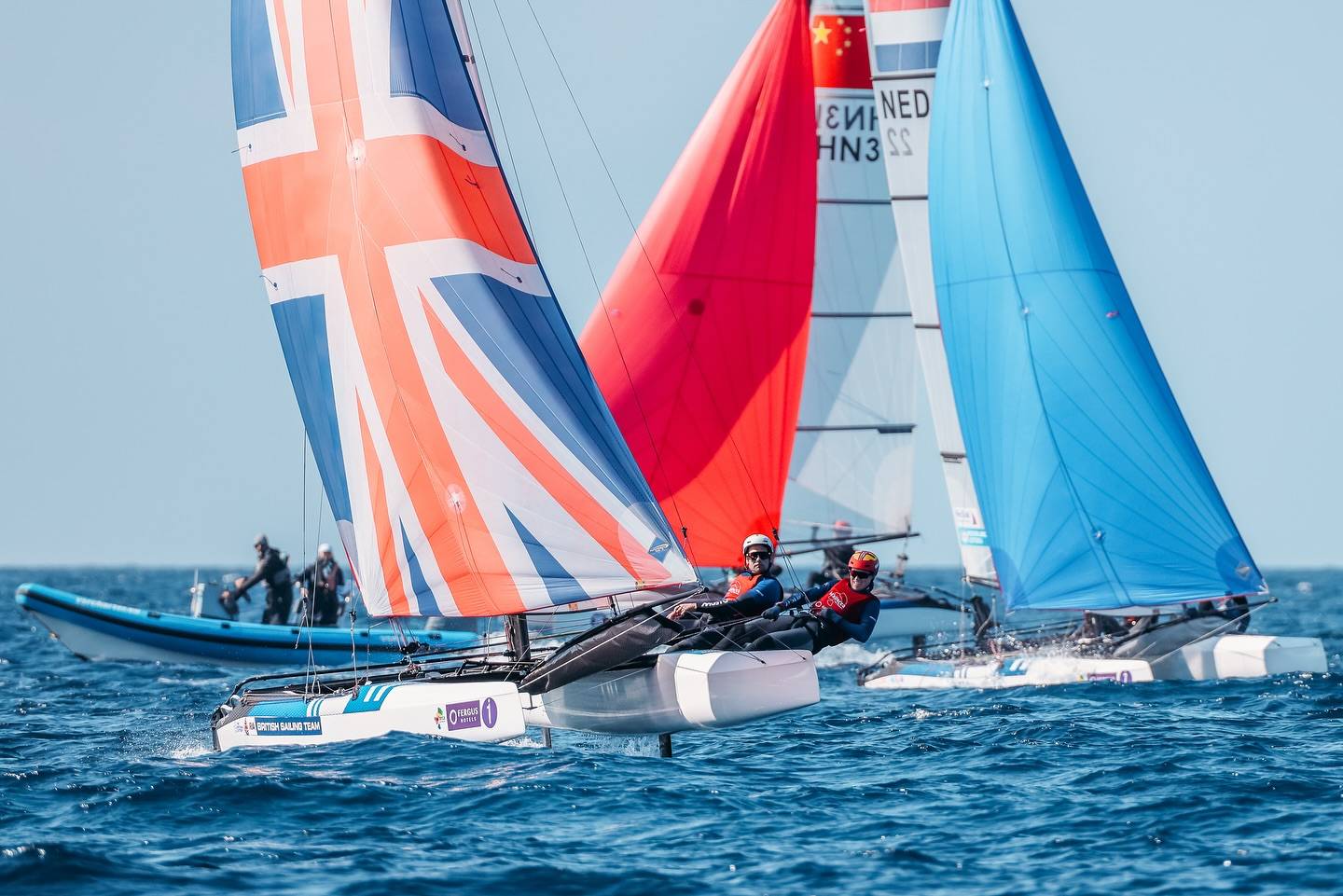CSN Interview: Bastiaan Tentij & Flying @30knots
 Bastiaan Tentij has been a top performer F18 sailor for more than 6 years now, countless regattas won in the F18 and too many close wins on world titles along and his partner Mischa Heemskerk. Beyond continue racing F18 Bastiaan had the chance to work this year in one of the most interesting projects in the sailing scene these days, the Hydros Project. They will participate in the C-Class LACup with a foiling C, just like Frank Cammas is aiming to do , marking a milestone in the Class and following the path of the Big ACup AC72s.
Bastiaan Tentij has been a top performer F18 sailor for more than 6 years now, countless regattas won in the F18 and too many close wins on world titles along and his partner Mischa Heemskerk. Beyond continue racing F18 Bastiaan had the chance to work this year in one of the most interesting projects in the sailing scene these days, the Hydros Project. They will participate in the C-Class LACup with a foiling C, just like Frank Cammas is aiming to do , marking a milestone in the Class and following the path of the Big ACup AC72s.
Last week Bastiaan they published a Nacra F20c flying video going 30knots, and today he will merge those foils on the C-Class. Images Hydros & Jasper van Staveren
 I contacted him to know more about this project. Foiling 30knots video below. – Interesting comments on the boat handling transition from floating to flying mode.
I contacted him to know more about this project. Foiling 30knots video below. – Interesting comments on the boat handling transition from floating to flying mode.
Next week he will be also at Grosseto for the F18 Worlds, and 2013 can be the lucky number…///
————————-
– CSN: Tell us about the Hydros project, are you going to have two boats?
Bastiaan Tentij: Hydros has three main projects at the moment, Hydropthere.ch, Hydrocontest and HydroCup. I am mainly involved in the HydroCup project. We have one of the best hydromechanical engineers in the world working for us and we developed the first boat every build with TPT technology. And it is true we are going to participate with two boats. Together with Jeremie and Billy who will be sailing one of the boats, Mischa and myself are setting up the boats and training in La Grande Motte the last 6 months.
-How does it feels to literally fly above the water at 30knots?
BT: The most amazing feeling ever! Just watch the video and you know what I am talking about.
– How hard was the the process to adapt to flight?
BT: Flying on the ‘smaller’ boats is new to almost all of us so training is necessary. The feeling of flying is completely contrary to what you are normally used to! To give you an example when the boat starts flying you lose all the pressure on your feet, where usually there was presure keeping you on the boat. This makes you feel like you are falling off the boat. You start getting used to this new feeling after some training time and they start feeling normall!
One thing that keeps amazing us and will probably never stop is the speed the boat accelerates the moment of flight and the excitement and adrenaline is indescribable! With the speed you have to think differently and plan way more ahead of time than usual. Sometimes the acceleration are quite scary but you get used to everything and now 26/27 knots is the new cruising speed!
– It is more a foil correct trim thing than say a handling ? Or finally a good combination of boths?
I mean can you fly the boat right away or it needed lots of foil trim testing, or it was harder to handle the boat and the trim was the one used since day one and planned?
BT: The design team went thought all the settings and the systems needed to make flight possible. Now is it up to us to figure out the best way to use the boat and sail as fast as possible. Flight is very easy right from the beginning but every hour we sail we learn a new thing and improve our speeds.
 Even with the best material in the world training is very important, so the one can not do without the other. Therefore we test a lot every day and keep track of our progress using data loggers and analysing this data together at night to learn the fastest way possible and also to give feedback to the engineers for further development of the boat and of course for future use!
Even with the best material in the world training is very important, so the one can not do without the other. Therefore we test a lot every day and keep track of our progress using data loggers and analysing this data together at night to learn the fastest way possible and also to give feedback to the engineers for further development of the boat and of course for future use!
 – Does it require additional dynamic weight placement?
– Does it require additional dynamic weight placement?
BT: Like I said we tested a lot and the dynamics weight placement is one of them. On the AC45 or AC72 the crew is relatively a small percentage of the boats weight and they have fixing positions on were they trim the boat. Were we can trim to boat from every position because the loads are not as high and the body weight is a relative high percentage of the total weight of the boat so you can imagine to influence the body weight can bring!
– I imagine of course that the Hydros C-Class will fly, but you also have the Wing. How was the transition from a soft main to the Wing?
BT: The wing seems really complicated at the first glimpse. But in the end we can do the same thing with the wing as we can with a soft sail we only pull on different lines and we give them different names but in the end it stays the same. A good thing is we have been setting up the wings ourselves so we know exactly who the wing is rigged and how all the systems work that make is a lot easier to understand.
– Till now the only flying Winged cats to my knowledge are the AC45 , AC72 and the Canadian foiling project that was discarded. How do see this ride on the video with the addition of the wing, you will know soon, but how do you expect to be?
BT: I will know today because today will be the first day flying on the C class with wing. Off course we start easy but I think we will be flying full speed not very long after the start and pushing the boat to her max at the end of the day. We have been training alot on the modified Nacra 20 to understand and learn the flying and also sailing with wing without flying now it is time to combine the two.
– In the F18 you sail a super fast and safe design in the breeze like the Cirrus R, you told me at LA, it was a pleasure to sail in high winds and you’ve won several regattas with it by now.
The Hydros C Class has low volume bow and overall design, how different is the ride between the two boats? Not having a jib/spi adds for a different trim downwind, with the bow up?
BT: The increase in speed and our slim boat design first made me think twice as well but now after what I have experienced using the flying daggerboards I have no doubts to go downwind when the breeze is on! The daggerboards (off course when trimmed right) provend us from pitchpoling. Were on the Formula 18 we need the volume because the daggerboards are not helping us and with the Cirrus R we have just that what makes it possible to push the boat even harder in the breeze.
– Busy schedule for this year right? You are racing the F18 next week , when the C-Class event will be?
BT: This year is a very busy year. I am working full time on the C class until after the race the 22 till the 28th of september and racing the big events in the formula 18 on the Cirrus.
 – You are one if not the most experienced dutch crew, why you didn´t get involved in the Olympic N17 Mixed campaign?
– You are one if not the most experienced dutch crew, why you didn´t get involved in the Olympic N17 Mixed campaign?
 BT: We have a lot of good crews in the Netherlands. I also would like to do the olympics in the future, but I have to fight hard to beat the other crews in the selection! But for now my focus is fully on the C class project. It is a very unique chance to be involved in a project like this and I am glad I got the chance! It is a great learning experience for me not only because of the sailing but also because of the technology and development!
BT: We have a lot of good crews in the Netherlands. I also would like to do the olympics in the future, but I have to fight hard to beat the other crews in the selection! But for now my focus is fully on the C class project. It is a very unique chance to be involved in a project like this and I am glad I got the chance! It is a great learning experience for me not only because of the sailing but also because of the technology and development!
– Other Current and future goals/ projects?
BT: Besides from winning the Little Americas cup. I want to become the formula 18 world champion! We have been close alot of times but this time I want to win it! And after that I would like to continu working with Hydros. The project they do are very interesting and it is great to work in a motivated team like we have now!


























Hey, Phantom Guys, are you watching? THIS is a stable flight. 😉
You'd better watch their last video.
Keep up the excellent development work